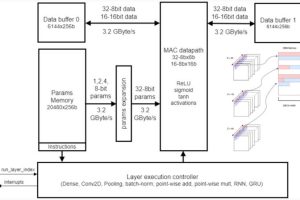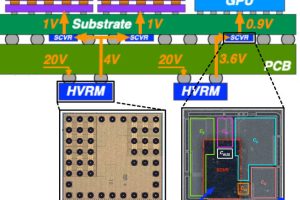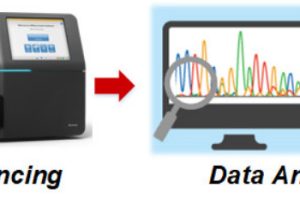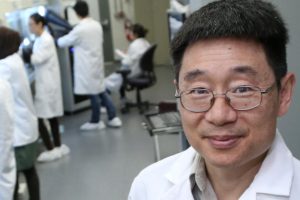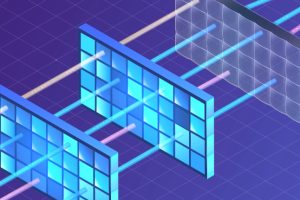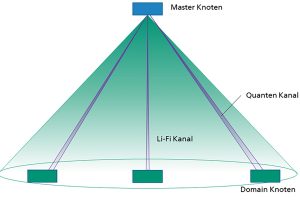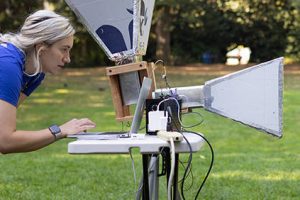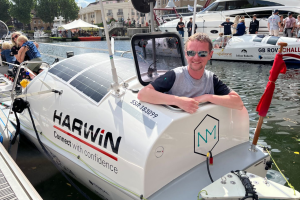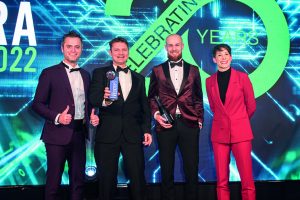A recent innovation at ISSCC is for the organisers to hand-pick a few ICs that they would like to hear about the conference – all the other speakers have to apply to present their innovations. This year they picked machine learning accelerators for both training and inference, an ultra-high bandwidth chip-to-chip link and an ‘infrastructure processing unit’ (IPU) for off-loading ...
Research
The latest electronics research news from within the industry and universities from around the world.
6G – the next wireless communications standard
The fundamentals of next-generation wireless communications are in progress and commercial deployment is expected around 2030. This will enable new possibilities, including holographic applications, extended realities and digital twins, says Dr Taro Eichler. The prospect of offering large contiguous frequency bands to meet demand for extremely high data transfer rates in the Tbit/s range will drive the next generation of ...
ISSCC 2023: Point-of-load conversion at the next level
At ISSCC this week in San Francisco, the University of California and Murata described a way to take point-of-load conversion to the next level – two-stage conversion with vertical current paths and package-level integration. Point-of-load schemes have solved the problems of I2R losses across PCBs for a long time, but the traditional approach of putting the PoL converter next to ...
ISSCC: Genome processor, and 99.9% less heat from a 3D image processor
At ISSCC this in San Francisco this week, the National Taiwan University revealed a processor custom designed to crunch the vast amount of data that emerges as hundreds of millions of short DNA segments are analysed en-route to producing a three billion nucleotides gene sequence. The biological detective work flow includes four steps: short-read mapping, haplotype calling, variant calling and ...
Longer perovskite solar cell life after theoretical search of passivating materals
Perovskite materials show much promise in solar cells as they are as efficient as silicon, but are deposited as thin films that can be coated on glass. However, their lifetime is nothing like as good as silicon, and many research projects are under way to increase durability. This week, the University of Toledo has reported on a project that passivated ...
Oxford optical AI spin-out gets £1.1m government grant
Oxford University spin-out Lumai has secured a £1.1m Innovate UK Smart Grant to commercialise its all-optical artificial intelligence processing technology. The money was awarded in conjunction with The University of Oxford, and follows funding from IP Group and Runa Capital. Its intellectual property covers optical matrix multiplication, electro-optic neural network training and all-optical neural network training. “Optics is a promising ...
Unlocking room-scale optical quantum key distribution
A German consortium is looking into short-distance optical quantum key distribution for secure data communication. “Previous research has focused on long-distance secure data communication for applications in the global data infrastructure, for networking government or military facilities, or for information exchange with satellites,” according to research lab Fraunhofer IPMS. “However, the connections to the end user on the last kilometre ...
Passive wireless link transmits only Johnson noise to send data
In what might be the lowest power data transmission scheme ever, researchers at the University of Washington have sent data using the Johnson noise of a 50Ω resistor – or more accurately, the difference in Johnson noise between a 50Ω resistor and an open-circuit. One of the prototypes 5bit/s was sent over ~7.3m with a bit error rate of 0.15%, ...
Harwin designs GB Row Challenge microplastics sampling system
Harwin, the interconnects specialist, is helping study the build-up of microplastics in UK waters via this year’s GB Row Challenge, which has an ecological angle. The Hampshire-based company is one of the sponsors of the event and it has also been working with the University of Portsmouth to develop the pumps for the microplastic sampling systems fitted to competing boats. ...
Readers’ Choice Award: University Research Project of the Year
Winner University of Bristol Bristol has created a 3D-printed fingertip that produces signals that appear to mimic human touch. It can produce artificial nerve signals that look like recordings from real, tactile neurons. This is an exciting development in soft robotics; it helps uncover how the complex internal structure of human skin creates our human sense of touch. On ...
 Electronics Weekly Electronics Design & Components Tech News
Electronics Weekly Electronics Design & Components Tech News
